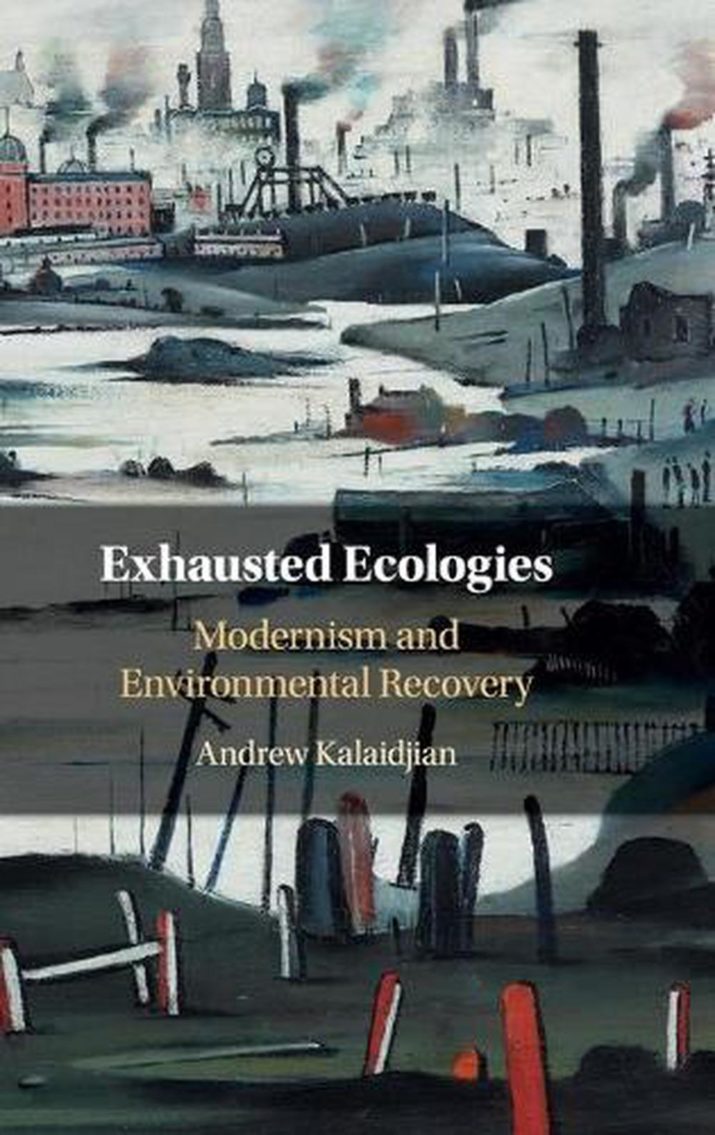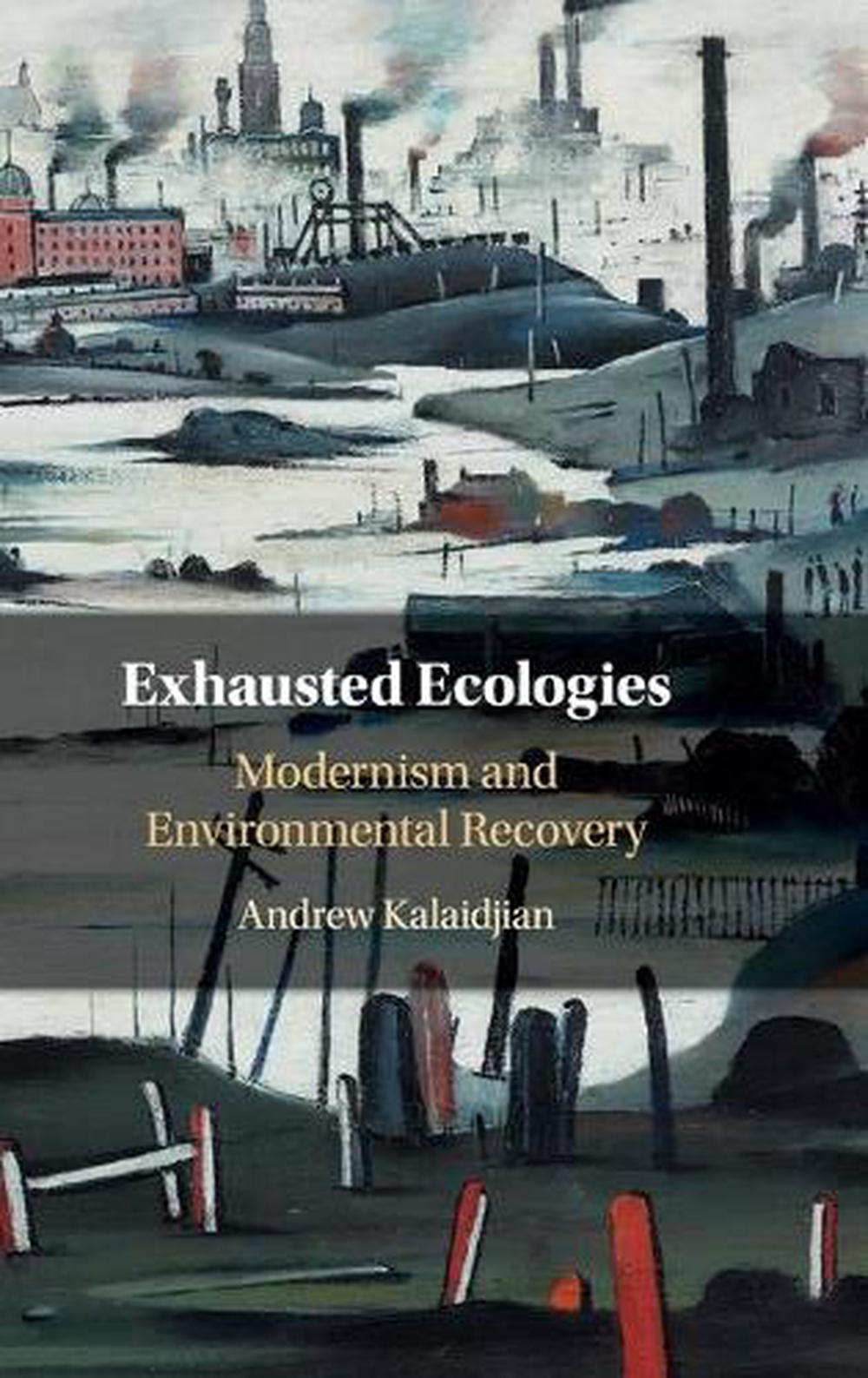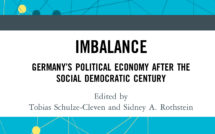

I began reading Andrew Kalaidjian’s Exhausted Ecologies: Modernism and Environmental Recovery (2020, Cambridge UP) outdoors, at a coffeeshop table in a small New Hampshire town. With trees and the foothills in view, I was intentionally placing myself within nature to relieve some pandemic stresses. Seeking out the rest and recovery that one can find in nature has been popular in the pandemic—with many national parks in the US closing their gates after reaching capacity. As Kalaidjian explains in his recent book, people in early-twentieth century Europe and its colonies also turned to nature to escape the stresses and exhaustion of modern life.
Exhausted Ecologies explores how the aesthetic efforts of British and Global Anglophone modernist authors contributed to scientific advancements, activist causes, and cultural critiques that exposed “the exhausting and exploitative conditions of modern life” in the early twentieth century (2). Through his analysis of D. H. Lawrence, James Joyce, T. S. Eliot, W. H. Auden, Djuna Barnes, Jean Rhys, and Chinua Achebe, Kalaidjian argues that the narrative experimentation and innovative aesthetics used by modernist authors played an important role in changing the public’s understanding of nature as a “place of rest, recovery, and regeneration”—a shift in perception that was critical in the development of contemporary environmental activism (2). Kalaidjian builds upon several recent works of ecomodernist criticism—such as Jeffery Mathes McCarthy’s Green Modernism (2015), Joshua Schuster’s The Ecology of Modernism (2015), and Kelly Sultzbach’s Ecocriticism in the Modernist Imagination (2016) among a growing number of others—to offer a nuanced reading of modernist texts that avoids overgeneralizing how modernist authors depicted modern environments. He also does not anachronistically characterize modernists as environmentalists, as modernist authors were not always explicitly concerned with environmental causes. Kalaidjian’s study of modernist rest and recovery allow him to explore how they are connected in issues of Empire, race, class, and privilege, thereby demonstrating how these issues, which persist in our contemporary society, are deeply entangled in environments and environmental issues.
Through combining the history of early environmentalist movements in Britain with literary modernism, Kalaidjian demonstrates how peoples’ perception of their environments “developed in relation to imperialist exploitation, world war, and a growing sense of the limits of anthropocentric control” (36). By drawing connections between these two movements, his historicizing constructs an even stronger foundation for continued work in ecological modernism. Kalaidjian begins with an overview of key environmentalist events in Britain up to the beginning of World War I (WWI). Citing organizations like the Society for the Promotion of Nature Reserves and the Smoke Abatement League of Great Britain, he outlines how early environmentalist efforts often used the rhetoric of nature’s economic “value” to insist on its protection from complete industrial exhaustion. The repeated effectiveness of leading with economic arguments in early environmentalist causes may come as a surprise to us in light of our contemporary understanding of what drives environmental activism in the era of climate change. Kalaidjian’s teasing out of this history here is instructive for our present moment, where unanimous support for mitigating (or even acknowledging) climate change is increasingly difficult to come by.
Kalaidjian’s literary analysis includes several productive frameworks that environmental humanists will find useful for approaching other twentieth- and twenty-first-century texts. He identifies in his first chapter how D.H. Lawrence instead imagines a “positive” inertia, one that is in tune with the more natural rhythms of the world, serving as a counternarrative to modern rhetorics “of unlimited energy and progress” (46). The Rainbow in particular “anticipates an environmental rhetoric of recovery through interconnection” and demonstrates the efficacy of positive inertia over time in Lawrence’s intergenerational narrative (45). By framing the years surrounding WWI through these various conceptions of inertia, Kalaidjian constructs a versatile approach for thinking through the afterlives of war and environmental violence. In his discussion of early-twentieth-century urban environments, pollution, and atmosphere in his second chapter, Kalaidjian suggests that modernist authors are uniquely suited “to reveal the slow, lingering, and persistent effects” of built environments on those that live within them (75). The visceral, bodily aesthetics in James Joyce’s Ulysses, for example,presents “a more flexible ecology of human and nonhuman relationships” that constitute the modern city (76). Kalaidjian suggests that this non-hierarchical and entangled vision of Dublin provides a model for thinking about human and nonhuman relations on larger, even global scales. The third chapter progresses into the 1920s and 30s, when the nineteenth-century ability to “escape to nature” is no longer possible in environments that have been irrevocably altered by WWI and modernization. With this realization, modernist authors—T. S. Eliot, W. H. Auden, and Djuna Barnes in particular—engaged in articulating a what Kalaidjian calls a “dark pastoral.” The dark pastoral acts as a foil to the pre-war notion of “back to nature”—it embodies the ambivalence and fractured realities of modern power dynamics that extend to the natural world. As humanity realized it was no longer dominant over nature, modernist authors’ use of the dark pastoral intervenes to “help us rethink humanity’s relationship to nature” (120). The dark pastoral of works like Djuna Barnes’s Nightwood acknowledges that nature creeps into the urban in a subversion of human control of built environments, as Kalaidjian writes, “There is no escape into nature; instead, it is nature that cannot be escaped” (134). The dark pastoral framework Kalaidjian outlines can readily be applied to other modernist texts, as it is capacious enough to embrace the ambivalence that many were feeling towards nature in the post-war era.
Chapters 4 and 5 engage more directly with exploring how modernist literature renders visible the damaging effects of empire on colonized environments. In Jean Rhys’s work, her environmental awareness exposes “the failures of interwar recovery, the failures of European nations to find rest and peace” that persist as a result of ongoing colonialism (141). Kalaidjian argues that Rhys’s fiction, using Good Morning, Midnight as an example, also shows women who return from colonized spaces but never feel at home in either, despite their abilities to go back and forth due to their “perceived whiteness” (147). Her Caribbean background uniquely suits her to critiquing British empire and interwar recovery, as works like Wide Sargasso Sea illustrate “an aesthetics of environmental resistance to imperialist incursions” (156). Chapter 5 delves into mid-century modernism with Chinua Achebe’s 1960 novel No Longer at Ease. In the decline of colonialism, No Longer at Ease demonstrates “the unevenness of environmental recovery” (164). Here Kalaidjian makes the case for literature’s intervention in discussions of empire and environmentalism, as literature is able to explore paths of cultural resistance to exploitative modern and imperial narratives. Colonizers, he explains, have “little incentive to create a sustainable model of economic growth” because they can simply return to the “imperial center,” but colonized peoples do not have this freedom of mobility to leave the landscapes and environments that have been, and continue to be, exhausted and exploited by imperial powers. No Longer at Ease thus presents “a distinctly new African awareness” of how capitalism and anthropocentricism shape modern environments (186). Kalaidjian’s contributions here demonstrate the fruitfulness of reading Global Anglophone modernisms through postcolonial ecocriticism, as literature can pointedly show us how environmental justice concerns arise along with decolonization.
While Kalaidjian’s contextualization of modernist literature within early environmentalist history is quite robust, his decision to characterize literature written into the 1960s as modernist could have been bolstered through engagement with recent debates in modernist studies about how modernism itself is periodized. To continue dismantling the modernist canon and incorporating more diverse voices and texts to modernist studies, modernist scholars have begun to read texts from various spatiotemporal contexts (i.e., outside of the Eurocentric, metropolitan centers and the interwar period) as modernist—work that Kalaidjian has certainly done with his wide selection of twentieth-century texts in Exhausted Ecologies. An expansive reading of modernism like Kalaidjian’s becomes possible if one finds a common point of analysis through which shared literary responses to modernism/modernity become visible, even though they may take different aesthetic forms from text to text. His focus on rest, recovery, and exhaustion across various modernist texts and modernisms is an excellent example of how productive this approach to modernism can be, particularly when reading modernism ecocritically. A more explicit discussion of Susan Stanford Friedman’s concept of planetary modernism—as articulated in her book Planetary Modernisms (2015)—for example, might have more clearly situated Kalaidjian’s approach to modernism within recent turns in modernist studies. Moreover, Friedman’s assertions that a truly planetary approach to modernism—one which redefines modernity as a “condition that is multiple . . . and recurrent for millennia and across the globe”—welcomes and perhaps necessitates ecological readings of modernist literature (4). She explains her hope that a planetary approach to modernism will provide the epistemological framework and freedom for “thinking about nonhuman modernities” or “the interconnections of the human and the nonhuman,” or what she views as “new directions for others to follow” (8). Kalaidjian’s approach to modernism certainly falls beneath the planetary umbrella Friedman has articulated, and his work could have been strengthened had he considered this epistemological framework.
In his introduction, Kalaidjian expresses the need for both modernism and ecocriticism to advance each other and not “simply reinterpret one through the other’s lens” (9). His combination of historical contexts with novel and broadly applicable approaches to environmental readings of rest, recovery, and exhaustion in British and Global Anglophone literature certainly advances modernist studies as well as presents ecocritical frameworks that scholars could apply to other cultural contexts. Exhausted Ecologies therefore has much to offer to those studying Europe and its empires, environmental historians, modernist literary critics, and ecocritical scholars alike. Kalaidjian’s work here overall is timely in light of the increasing threat of climate disaster, as well as a fascinating view into the connections between modernist literature and the beginnings of modern environmentalism.
Leanna Lostoski-Ho is a doctoral candidate in English at the University of New Hampshire. Her work focuses on representations of the environment, the passage of time, and humanity’s relationship with the nonhuman world in early-twentieth-century modernist texts. She has published an article on Virginia Woolf’s depictions of nonhuman materialities titled “‘Imaginations of the Strangest Kind’: The Vital Materialism of Virginia Woolf” (2016) in the Journal of the Midwest Modern Language Association.
Exhausted Ecologies: Modernism and Environmental Recovery
by Andrew Kalaidjian
Publisher: Cambridge University Press
Hardcover / 234 pages / 2020
ISBN: 978-1-108-47791-8
References
Friedman, Susan Stanford. Planetary Modernisms: Provocations on Modernity Across Time. Columbia UP, 2015.




